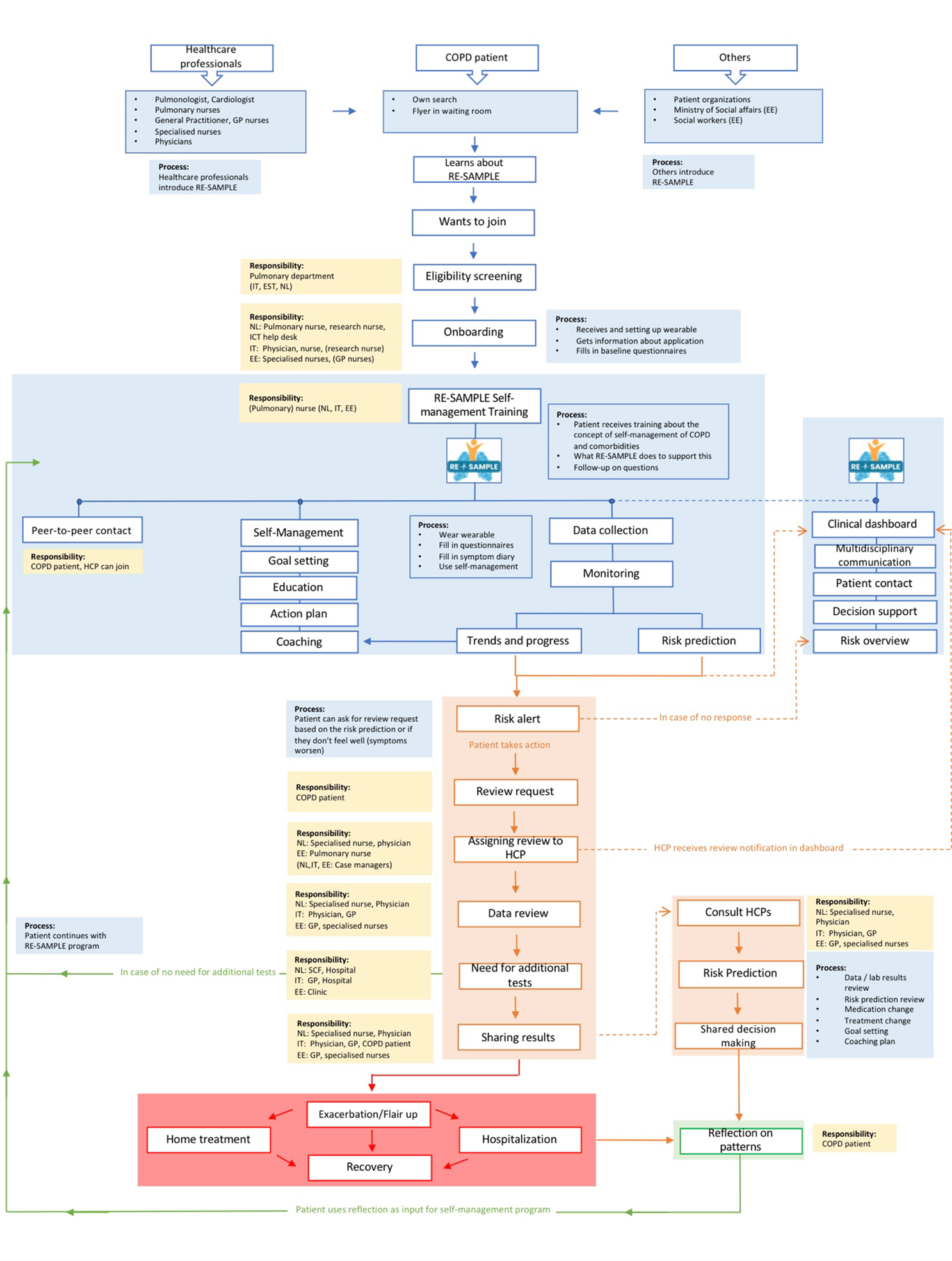It is not always obvious that new health technologies or care processes actually become embedded in daily routines. Promising ideas, as well as concrete healthcare innovations, are regularly not successfully implemented in daily healthcare practice.
Healthcare is a complex system, introducing a new health technology within a healthcare organization affects multiple stakeholders and processes. For the successful implementation of a new technology, it is very important to properly map healthcare processes and understand how introducing a new health technology will change them. And what impact it will have on stakeholders. We use the Service Modeling method to support you in this process. We can also conduct short-term trial periods and evaluation processes to achieve a successful final implementation of your health technology.
We will be happy to advise you which method best suits your needs and situation.
Service Modeling
Through Service Modeling, we map and visually represent the planned implementation of the new technology in the healthcare environment. A good starting point for this is the Patient Journey. A service model goes further and includes the clinical perspective, processes and roles.
Service Modeling can only be performed by involving all key stakeholders since they are domain experts. Together with these stakeholders, including the users of the new technology, we will identify the current situation in practice, roles and responsibilities, as well as strengths and weaknesses for the current approach.
Based on this input, a service model for the new approach is developed. When visualizing the service processes, both the underlying support processes and the contact moments with the patient are included. Service modeling provides insight into the various roles, interactions and dependencies associated with the use of the new healthcare technology. How the patient experiences the care plays an important role.
What does Service Modeling provide?
Service Modeling helps healthcare organizations anticipate the entire service around new technology, allowing them to implement a new technology more effectively and efficiently. From Service Modelling you can expect, that;
- It offers new perspectives on the care to be delivered by involving all stakeholders
- It identifies potential bottlenecks in the care processes. It shows which parts in the care processes can or should be changed when the new technology is implemented
- It reveals all contact points, which are important to meet patient needs
- It identifies additional requirements the technology must meet
- It gives healthcare professionals insight into the process involved in introducing the new technology, allowing it to be implemented more efficiently and effectively.
Case study
